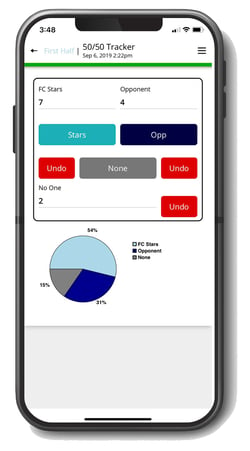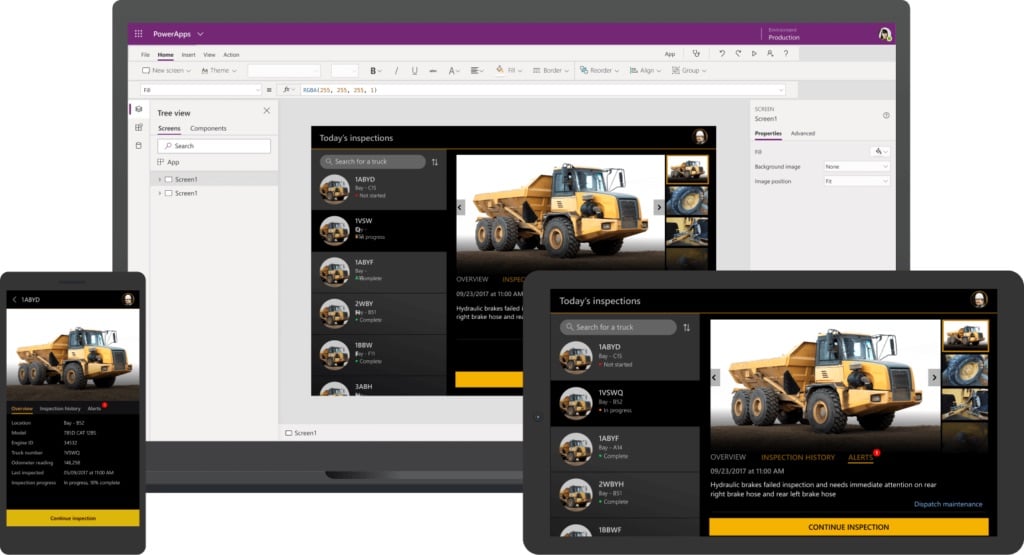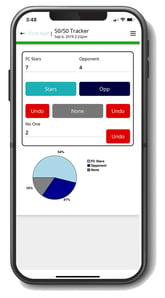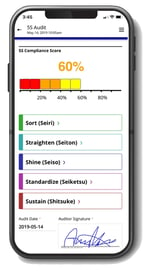
Read on to learn if low-code disadvantages or low-code limitations outweigh the advantages of low-code platforms.
Low-code development is a way to build mobile and desktop applications with minimal hand coding (typing code manually). Also, you don’t need a vast knowledge of programming languages.
Typing source code takes time. Before you can start creating any application, you need to test coding in a non-production setting.
Low-code development platforms have intuitive user interfaces or drag and drop tools, making it far quicker to develop and test an application. They also remove the need for tedious coding. No-code app builders, a subset of low-code products, allow anyone to build apps, even if they can't code at all.
Some low code development tools give you the option of adding layers of code, but only if and when you choose.
Research by Forester shows thatthese innovative development platforms are growing 50% year over year. This is due to the advancement of low-code capabilities to meet the needs of enterprises and help accelerate business processes.
Why is low-code development growing rapidly? Firstly, it enables business users with minimal coding knowledge to build exciting mobile and desktop applications.
Secondly, it helps businesses digitize time-sapping manual processes like employee workflows, payroll, and more.
Another plus is IT departments can focus on more pressing issues and business users can also use their creativity to build fully functional apps. Other advantages of rapid application development are:
While low-code certainly has its advantages, there are also drawbacks.

Low-code also has its flaws, but there are ways to overcome them. A list of requirements and goals is helpful when checking out low-code platforms.


A low-code development platform requires minimal coding skills. It relies on simple logic-driven visual interfaces or drag-and-drop functionalities. Thanks to these intuitive low-coding tools, business users and professional programmers can create applications of varying complexity. Here are some essential features of low-code platforms:
Out-Of-The-Box Functionality: Low-code development platforms typically include the modules you need to build an app. Pre-built components can also be reused to build other applications.
Security and Features that Scale: Security features ensure that all apps that are built are safe and secure at all times. Flexibility ensures that the apps that are built can adapt to changing or growing business needs.
Reporting and Monitoring: Most low-code development platforms can assesses the effectiveness of app processes and workflows. Some platforms allow you to monitor the performance of other apps and compare them to your own.

While low-code development platforms are meant for business users with limited programming skills, no-code platforms are meant for even those who have no programming skills.

It's important to understand which rapid application development software can optimize web apps and mobile apps, depending on what you need to build.

Low-Code Vs No-Code in Creating Web and Mobile Apps: Low-code development platforms use visual declarative techniques instead of traditional programming. However, they require coding skills to complete integration with other systems. No-code, on the other hand, uses drag-and-drop tools that appeal to a broader audience without programming knowledge. This is achieved through workflow templates and element libraries
What is Best to Use for Web Vs Mobile apps? Low-code development platforms are best for building standalone web and mobile apps, as well as portals that will need to integrate with other systems and multiple data sources. In fact, low-code can be used for just about any application. Low-code web and mobile apps should only be used for front-end use cases.
PowerApps is icrosoft's low-code development platform, its main advantage is its integration with Microsoft Office 365, Microsoft Flow, and Microsoft BI, making it easier to get data into and out of any of the Office365 applications your organization uses daily. It is also relatively quick to build a simple application from scratch. All you need to do is follow the instructions. However, PowerApp’s multiple menus can make this quite challenging at first.

 Alpha TransForm is an app maker for developers and business users alike. It enables the creation of applications that fit into enterprise workflows and digitize any work process for smartphones and tablets, such as compliance and auditing and reporting, inventory tracking... and more. It allows citizen and professional developers to build apps in hours and days, rather than weeks. Other features include data capture of business and field information, data collection in remote areas without Wi-Fi or a cell signal.
Alpha TransForm is an app maker for developers and business users alike. It enables the creation of applications that fit into enterprise workflows and digitize any work process for smartphones and tablets, such as compliance and auditing and reporting, inventory tracking... and more. It allows citizen and professional developers to build apps in hours and days, rather than weeks. Other features include data capture of business and field information, data collection in remote areas without Wi-Fi or a cell signal.

 Alpha Anywhere low-code software provides developers with a single platform to develop web, desktop, and mobile business applications. It is the ideal platform for citizen developers who have specific business needs and developers who have the technical knowledge to work in tandem to produce custom apps that integrate with company workflows, data sources, applications, and legacy systems. Alpha Anywhere allows developers to get their work done easily whether it involves server code, HTML, Java, or CSS.
Alpha Anywhere low-code software provides developers with a single platform to develop web, desktop, and mobile business applications. It is the ideal platform for citizen developers who have specific business needs and developers who have the technical knowledge to work in tandem to produce custom apps that integrate with company workflows, data sources, applications, and legacy systems. Alpha Anywhere allows developers to get their work done easily whether it involves server code, HTML, Java, or CSS.
Start developing apps at lightspeed for free.








The Alpha platform is the only unified mobile and web app development and deployment environment with distinct “no-code” and “low-code” components. Using the Alpha TransForm no-code product, business users and developers can take full advantage of all the capabilities of the smartphone to turn any form into a mobile app in minutes, and power users can add advanced app functionality with Alpha TransForm's built-in programming language. IT developers can use the Alpha Anywhere low-code environment to develop complex web or mobile business apps from scratch, integrate data with existing systems of record and workflows (including data collected via Alpha TransForm), and add additional security or authentication requirements to protect corporate data.
Alpha Software Corporation, based in Massachusetts, produces award-winning software that speeds mobile and web app development and deployment for business and IT. The core technology includes two components. Alpha Anywhere®, a full-stack low-code app development platform for building and deploying web and mobile apps. In just hours, Alpha TransForm® turns complex paper forms into powerful mobile forms that speed data collection.
Alpha Software is an InfoWorld Technology of the Year award winner, and scores near-perfect reviews from customers on crowdsourced review sites.
Customers rate Alpha Software highly for its speed of development, flexibility, offline apps, rich feature set and ability to scale predictably. For more information, visit https://www.alphasoftware.com/